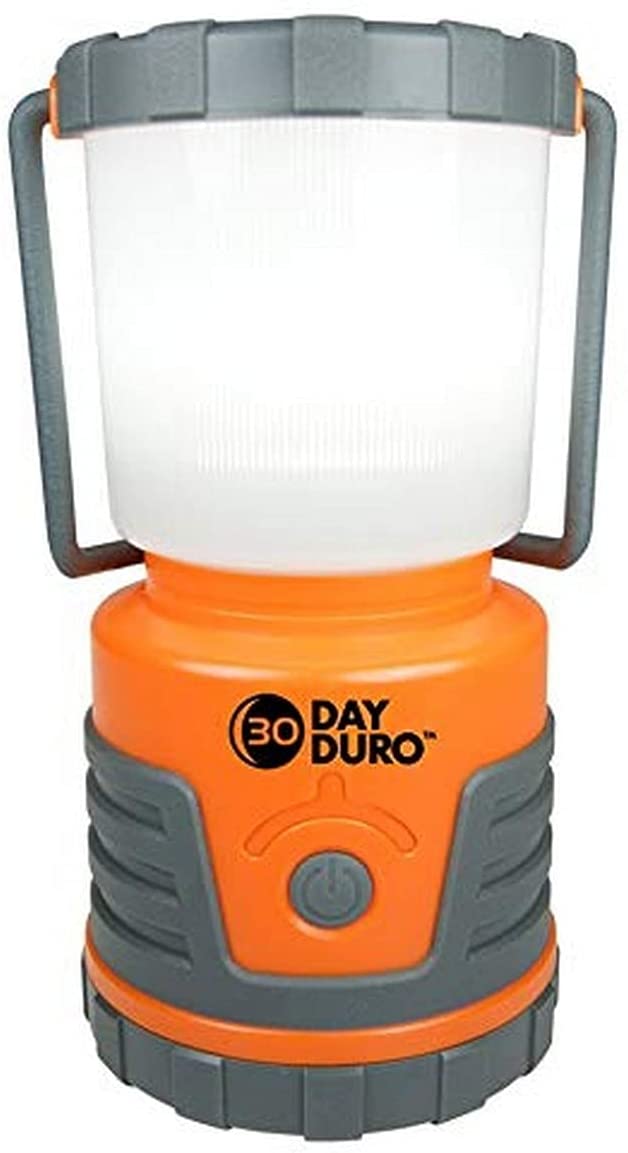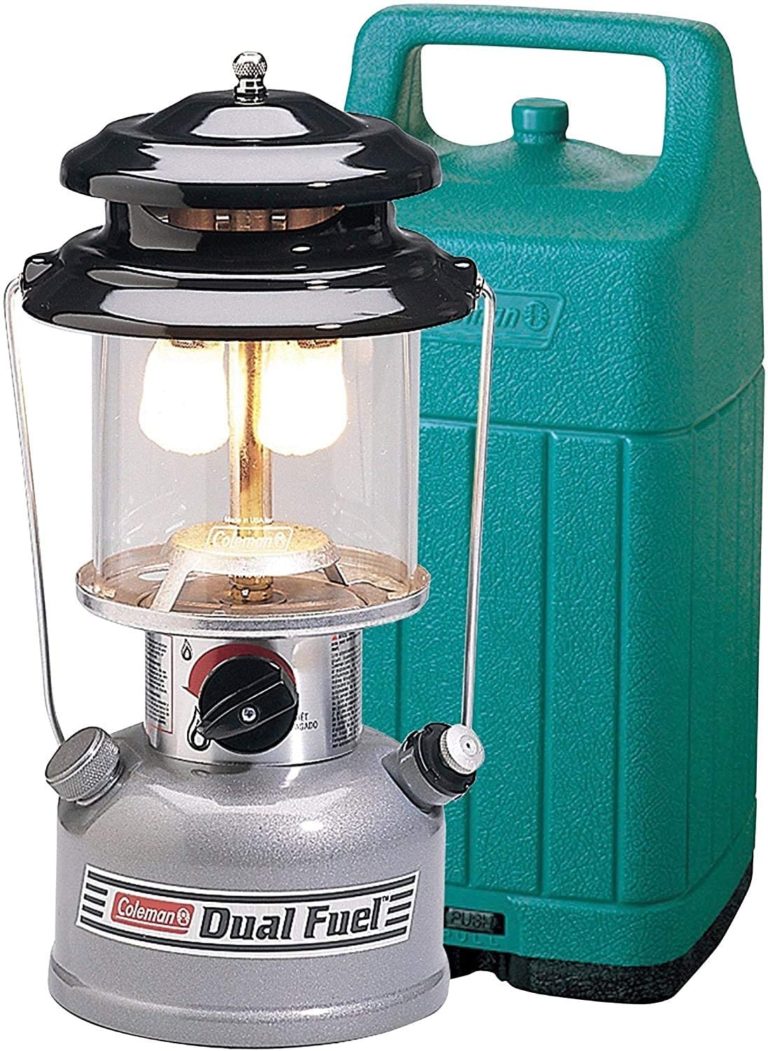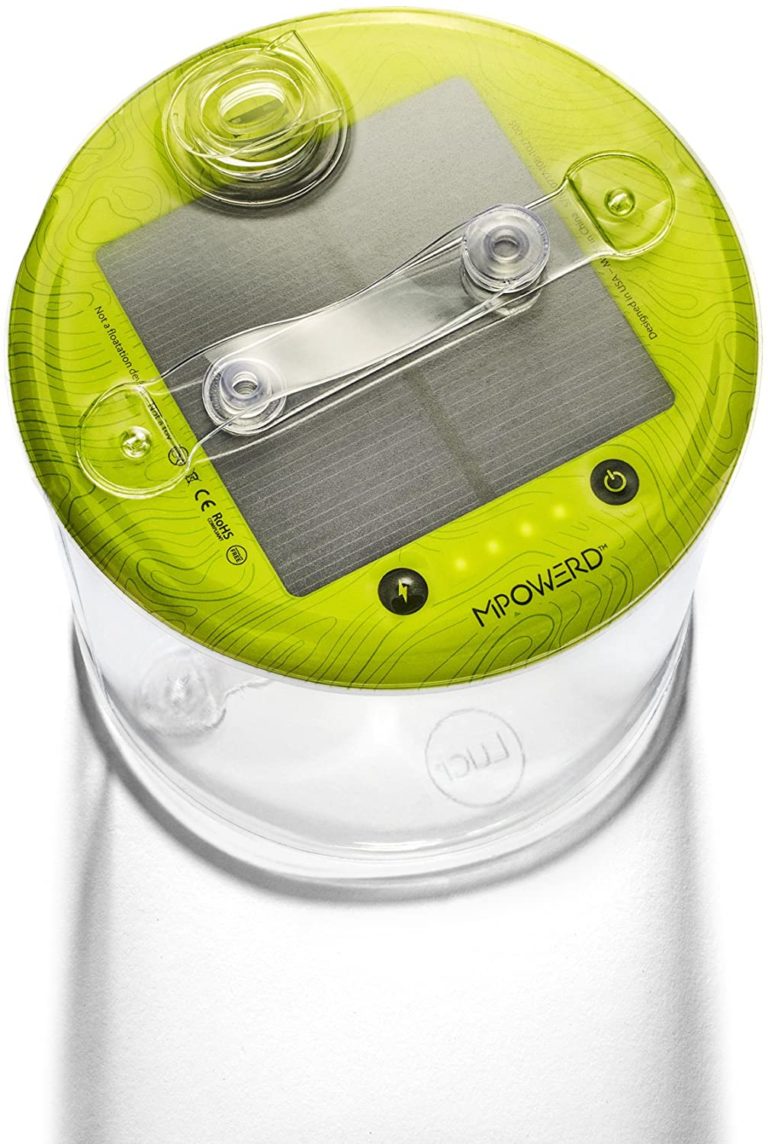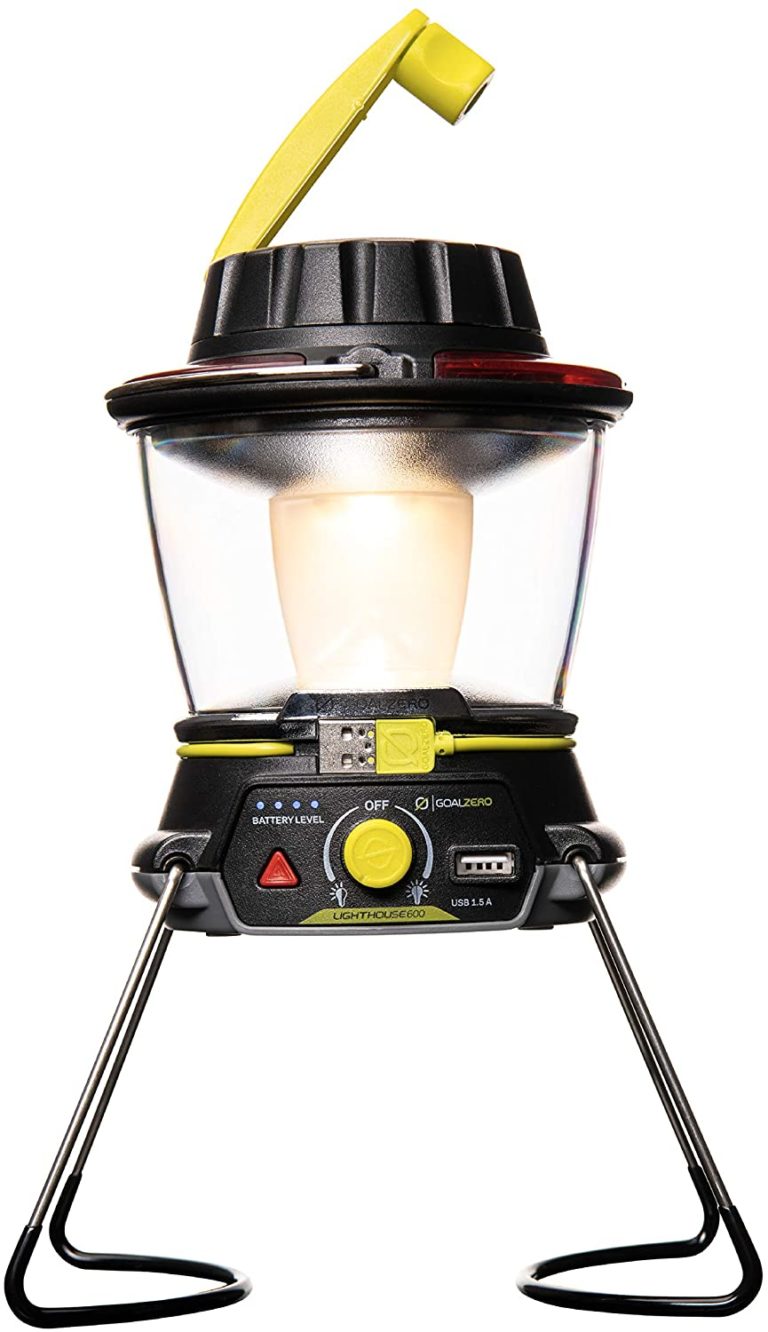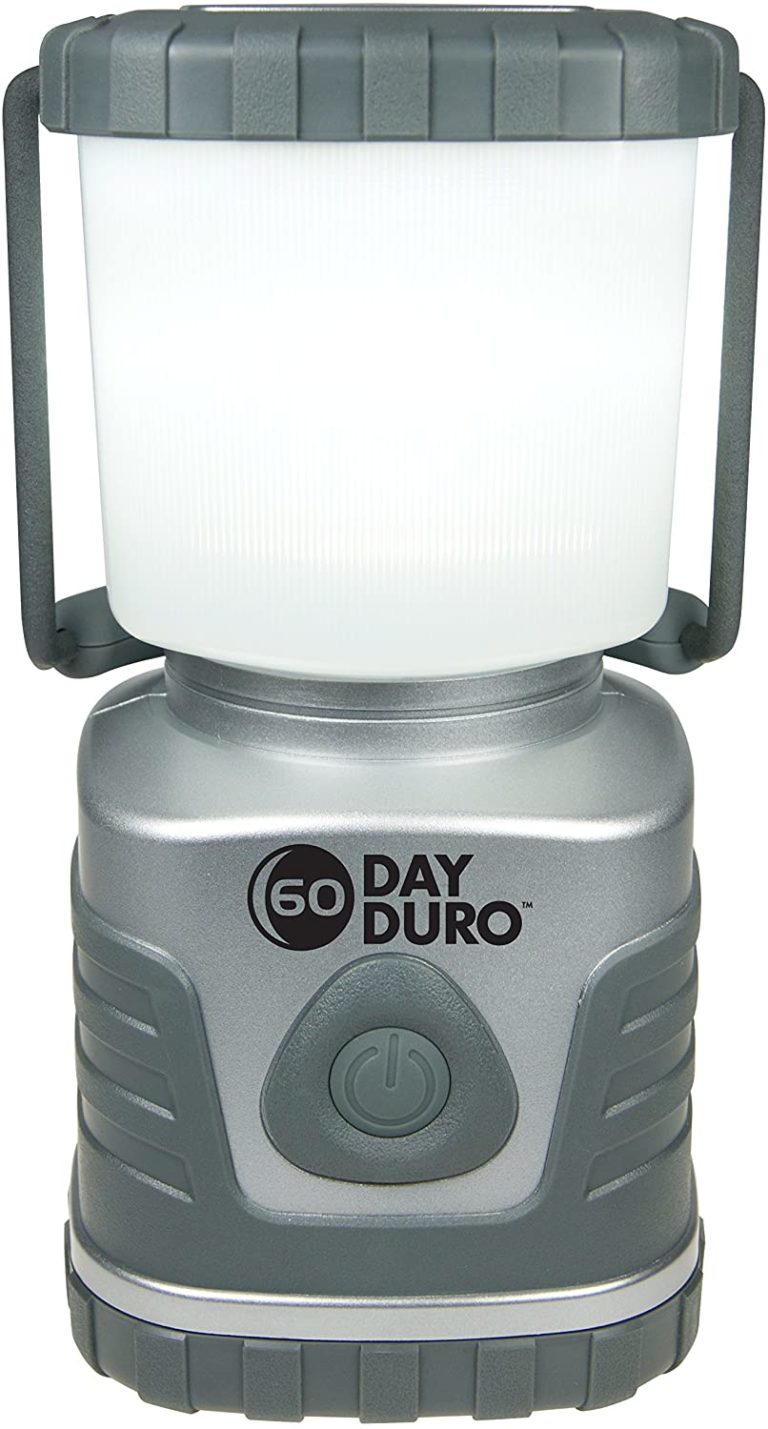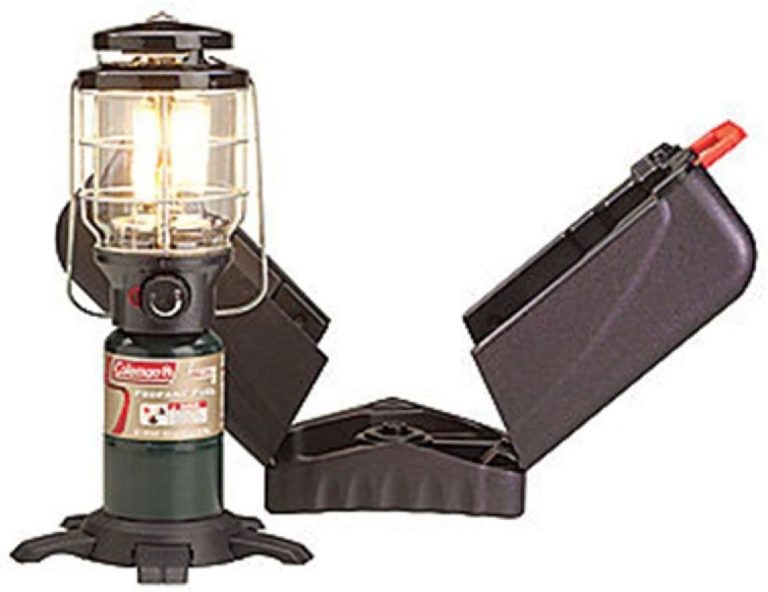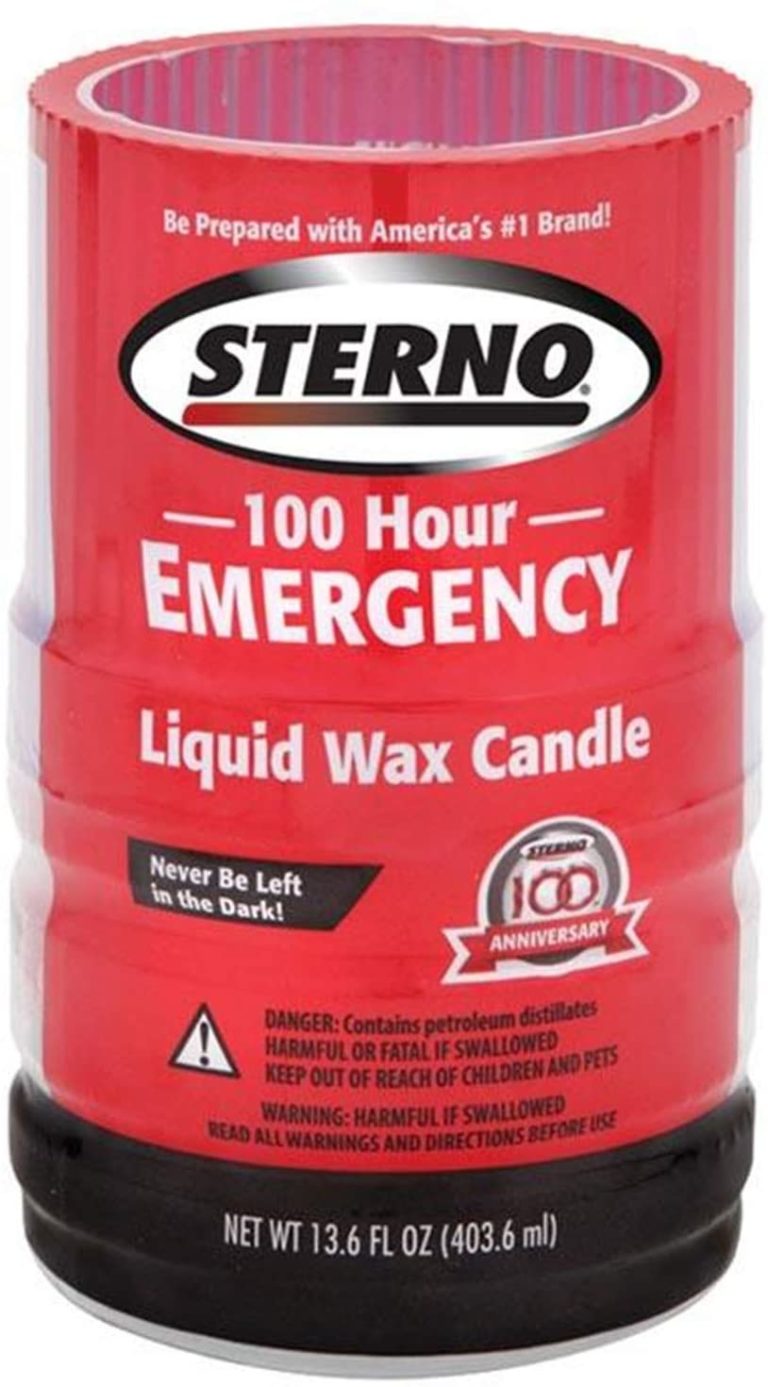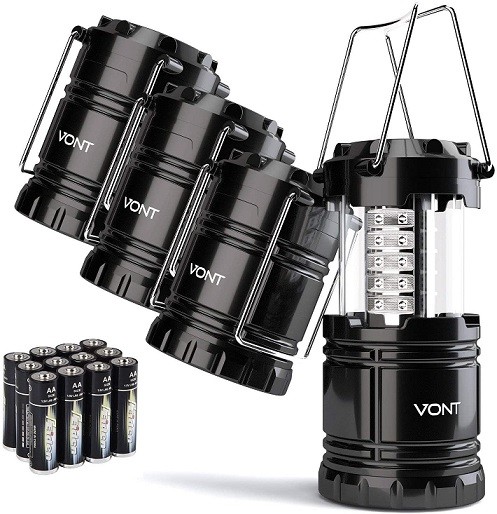Every person and property will have its own requirements for what makes the best lantern for a power outage. The qualities of lanterns for an emergency are not all the same as what people look for in a camping lantern, so we are going to look at a wide variety of options and outline the best choices we have found in multiple categories.
Whether you need a heavy-duty light and power source for a large property or simply a cost-effective, simple solution, you will be able to find a lantern that fits your requirements. Here are some of the biggest factors to consider when choosing a lantern.
Table of Contents
- Choosing the Best Lantern for You
- Types of Lanterns
- The Best Lanterns for a Power Outage
- MPOWDERED Luci Pro 2.0 (Most Features and Usability)
- Goal Zero Lighthouse 6000 Camping Lantern (Top all-around Best)
- UST 60 DAY Duro LED Portable 1200 Lumen (Longest Life / Most Hardcore Light Source)
- Coleman Northstar Propane Lantern (Electricity-Free Top Pick)
- Sterno 100 Hour Candle (Economical Picks)
- UCO Original Candel Lantern (Top Candle Lantern)
- VONT LED Camping Lanterns (Top Small LEDs)
Choosing the Best Lantern for You
Your Property’s Lantern Needs
Looking at your realistic light needs is an important step in the process. While people in small houses or apartments can get away with one light source in the center of their home, many people who wish to be prepared will need a dynamic solution. The best lanterns for a power outage will always be whatever suits your needs perfectly, so there is no universal answer.
Managing the cost of purchasing, fueling, and storing your lights is a limitation many preppers have to contend with. For larger properties, multiple lights will be needed, but not necessarily all of the same type and quality. Situations requiring an assortment of lanterns are better served by diversifying the fuel type and sturdiness of the light sources themselves. That way, you are prepared for a wider variety of situations.
Size / Weight
The best lantern for a blackout will probably never leave your property, larger sizes and heavier weights are usually fine. If you plan to hang lanterns at strategic points throughout a home or yard, you may need to only avoid the absolute heaviest options available. If you have children, the best lantern is one that they will be able to easily lift and use.
Size is also a factor for people with limited storage space, while weight is more important for mobile preparedness kits like a bugout bag. Some fuel types, like propane, are much better suited for static light sources.
Fuel Type / Battery Type
Deciding the fuel type for your lantern is another critical step. Each type of lantern has its own pros and cons.
The best lanterns that are battery-powered may need heavy or expensive batteries and regular replacements, even if you don’t use the lantern. But, battery-powered equipment is generally easier to extend the life of, compared to a lantern that needs to recharge from a power source like an outlet or the sun.
Solar lanterns are a great way to have worry-free lighting around the outside of a property, even when there isn’t a power outage. If you do not plan on spending much, or any, time out in the open during the day, recharging a solar lantern might be a daily chore you would not enjoy.
Rechargeable lanterns can usually hold tons of power, enough to even charge other devices in some cases. However, once you use your power up, that’s it. One large light and energy source is asking for trouble in a long-term power outage. If you have a way to harvest more energy off the grid, like solar panels, then a large rechargeable lantern could be a smart option for you.
Lanterns that use traditional fuel like natural gas, propane, kerosene, and butane are all handy, but they are typically much heavier than electric lanterns. Like batteries, these fuels can be pricey and will not last forever sitting on a shelf. However, if you regularly replenish your fuel for grilling or as a fuel source for other emergency response options, finding a lantern that uses that same fuel can ensure you are not dependent on electricity working.
There are many reasons that electricity might not function like normal if there is already a widespread power outage or discontinuation of service. Many people prepare for the event that an EMP or solar flare knocks out the entire electrical grid. In that case, oil-based fuels would last for a while, but resorting to primitive technology would be a smart backup. Candles and candle lanterns are a time-tested solution for darkness, with a nonexistent expiration date and cheap implementation.
Later in this article, each fuel type will be elaborated upon, and an option given for whichever type you decide is suitable for your best lantern.
Brightness
Any light source is only as good as how much light it will provide you, which is measured in lumens. Lumens are the unit of measurement for visible light, although other lantern features such as a diffusion cover could impact the actual results you get.
For low light in one small room, about 100 lumens should have you covered in a power outage. But if you need bright lighting to work, cook, or manage your resources in a long-term survival situation, you will want a lantern that produces at least 200 lumens. Most LED lights are between 50 and 700 lumens, while more powerful fuel types like butane and propane can pump out thousands of lumens like a miniature sun.
The best lanterns should fit your lighting requirements. If you are strategizing light replacements for multiple rooms, a mixture of lumen capabilities will serve you best. For example, 100 lumen lanterns in the bathroom and sleeping areas and a high-powered 500 to 1000 lumen option for a large communal space would be much more effective than low lights or intense lighting in every room.
Features and Ease of Use
Some of the best lanterns are multi-use. While many extra features on lanterns are best suited for active use while camping, like a compass or additional power banks with USB charging spots, the features we looked at are for power outages. Simple yet crucial add-ons like hanging hooks, rubber foot pads, and adjustable light output can make the use of a lantern much easier, especially when it might be your only way to see through a blackout.
Adjusting the light should go beyond an on or off button. Economical lanterns like the Vont LEDs and UCO candle lanterns have the ability to slide into their casing, lowering the light, but this means you are always using the same amount of fuel. Dimmable lanterns are a huge help, as well as lanterns that can be changed to a strobe light setting for signaling others.
Durability
Durability should be a top factor when shopping for your best lantern. Depending on your household needs and the type of emergency you are preparing for, a durable lantern could be the difference between light and dark. Water resistance can help with inclement weather for outdoor lighting, but indoor lights need to be sturdy as well. If lights will be moved from room to room, make sure you do not opt for the cheapest options, because if a child drops it or someone bangs it against a doorframe and you might be down a lantern until things improve.
Cost (And How Many Lights Do You Need?)
Even just preparing for a power outage means you will need to gather a lot of different equipment. You will need to replace the ways to prepare food, communicate, and heat or cool the building, to say nothing of what happens to most groceries without a refrigerator. And if other services might be impacted like clean water and gas, your list becomes much longer. Finding the best value for your best lantern for a power outage is an important part of the equation, although budget models may not be reliable enough for a long-term emergency situation.
Figuring out the bare minimum light needs for your home can require some trial and error. Testing emergency gear is an excellent way to find potential problems and should be performed regularly. By testing out your lights, you can truly find the best lanterns for a power outage, and it becomes easier to add more over time if needed.
Related to cost is the brand recognition of the lantern maker. Relying on well-known manufacturers in your time of need can add peace of mind and stability, through warranties and product guarantees. But, this will inevitably mean your costs will increase. While many preppers have the instinct to go for famous camping brands, the needs of a weekend car-camping trip are very different from a true survival situation of a long blackout.
Run Time
Even your best lantern will have power limitations. In a power outage, many once-simple tasks like cooking dinner, communicating with others, and doing laundry can all become a much larger challenge. To avoid unnecessary tasks and a splitting of your focus, a lantern with a long run time is critical. Run time is linked to how long one charge, set of batteries, or other fuel source will last before you need to take an action. Short run times might be a symptom of inefficient fuel usage, which will cost you more money in addition to your time spent charging or refueling your emergency lantern.
Types of Lanterns
With so many options available for light sources, to choose one as your best lantern can be overwhelming. To make your choice easier, avoid oil-based fuels for indoor lighting because of their fumes, although they will provide heat as well as light. Gas and oil lights were the standard before electricity, so they are not always deadly. Although it is always better to be cautious and use them in well-ventilated spaces.
For small or sealed indoor spaces, solar is also not the best lantern option if you do not have large windows. So if you expect to be locked down at home, stick to rechargeable, battery-powered, LED lanterns and candle lanterns.
Rechargeable
Rechargeable lanterns usually have lighter and more powerful internal batteries than a lantern with disposable batteries. This allows most rechargeable models to offer more functions, like charging other devices using a USB port. The main downside is the lack of recharging options during a long blackout, which is why rechargeable lights are better suited for camping or other short outdoor activities..
Battery-Powered
Choosing a battery operated model as your best lantern is a great option. Batteries are great; they are a standard way to power the vast majority of devices and electrical equipment so everyone should keep a supply of batteries on hand. Battery-powered lanterns are a great option for a lantern during a power outage, because refueling is easy if you have more batteries. While this makes running these more expensive than rechargeable lanterns, when recharging is not an option you can keep on using them.
The UST 30-Day Duro Glow is a great example of an insanely efficient battery-powered lantern for an emergency. We have a lot to say about this brand later, but just know that the 30-Day model can get you a month of low light for three D batteries.
Solar
You may think choosing a solar lantern as your best lantern is a natural choice for power outage. However, because solar energy is still a relatively new technology, options for this may be more expensive and not have the long track record you would like in a piece of emergency equipment. However, the benefits of being able to harvest free energy from the environment and use it to light your home is a great option if you can test and keep it charged.
Butane
Many backpacking stoves and lights use butane, isobutane, or a blend of butane and propane. Small, light canisters power these, and while they are typically disposable and costly, the convenience is very helpful. A small butane lantern could be a smart diversification for your light sources.
The Primus EasyLight Lantern is a great option for your best lantern if you already have butane canisters on hand and want another way to use them. The EasyLight is small and compact and extremely easy to use.
Propane
Propane is a great fuel source because of the bulk buying options available. While a small one-pound canister of propane can keep the Coleman NorthStar Propane Lantern lit for 8 to 24 hours, if you have a twenty-pound tank on hand you‘re set for a week. Propane is also used for lots of cooking equipment and heaters, meaning a large supply of propane can be a versatile and valuable asset to your overall preparation.
Gas
Although gasoline does not have an unlimited shelf life, standard unleaded gas is all around us in society. A lantern that uses gas can be a great way to make sure you will have enough fuel on hand, especially if you always make sure to keep at least a half tank in your vehicle.
The Coleman Dual Fuel Lantern can use gasoline or Coleman liquid fuel, making it cheaper to operate than a propane lantern. Pumping out 700 lumens means this will fill your outdoor space, but you will need to top off its tank after around 7 hours of use.
Kerosene
Consider choosing a Kerosene lantern as your best lantern. Lanterns and lamps that use kerosene or lamp oil are simple things, with a long history of use around the world. Because they use a flame instead of an electric light, kerosene lanterns both provide reliable light and, as a bonus, some warmth. They are a good choice if you would like to diversify or live in a very cold climate.
Made of sturdy metal and glass, the Dietz #90 D-Lite Oil Burning Lantern is the highest rated kerosene lantern we have found. It can burn for about 27 hours between refills, thanks to its large capacity. Just make sure to test yours, because with all kerosene lamps, a leak could result in a fire.
Candle Lanterns
Candles predate both electric and oil-powered light sources by hundreds of years. They are simple, yet reliable. When you pair a long-lasting candle with a candle lantern, you have a reliable long-term light source that does not require recharging or costly fuels. Candles are also much more shelf-stable than batteries and natural gas products.
If your best lantern is a Candle lantern, you do not have to check and replace your fuels over time, a hefty box of candles should be enough to light your way through any temporary power outage.
The preparation and survival industry has realized the value of returning to a time-tested solution to darkness. There are many “survival candles” on the market now, but not all of these options are equal.
Many homes already have decorative candle lanterns that can be used to add ambiance to a room. If you have some of these, check the manufacturer’s instructions to make sure you don’t overwhelm the frame with a powerful candle; some can only handle tea lights. Loose candles work just as well, but are a much greater fire hazard than a shielded flame.
The Best Lanterns for a Power Outage
Like most of the Survival Gears, there are so many options and types, it was hard to narrow it down. Based on your desired functions, these top seven lanterns are a great list to choose your best lantern from.
Best Lantern with the Most Features and Usability
The solar-powered MPOWERED Luci Pro 2.0 features a high-efficiency solar panel and a lithium-ion battery that can hold up to 50 hours’ worth of light. The Luci Pro also has a USB port for charging other devices, so you can keep other equipment functional after sunny days. If you live in a sunny area, it might be your most useful, renewable option. And that is why the Luci Pro is our honorable mention.
Top All-Around Best Lantern
A top contender for your best lantern pick. The Goal Zero Lighthouse 600 Camping Lantern is our top all-around best lantern for a power outage or blackout. This piece of tech is incredible. A lithium battery charges up using a USB charger, a Goal Zero solar panel, or a hand crank when you are out of other options.
The Lighthouse puts out enough power to charge phones, flashlights, or other USB devices with its cable as well. And the Lighthouse is also lightweight and engineered in the USA for rugged use. The only downside is that you will be tempted to take it out of your prep kit for all kinds of other uses.
Best Lantern with the Longest Life / Most Hardcore Light Source
When you don’t know when the power grid will come back on or become available again, the most peace of mind will come from a long-lasting and reliable light source. Not having to worry about your light will free up time and effort on other pressing concerns during a blackout.
The longest life light without refueling is the UST 60-DAY Duro LED Portable 1200 Lumen Lantern. Not only does Ultimate Survival Technology live up to their name, but this model will provide 60 days of low light or 192 hours of bright light using a lifelong LED light that will never burn out. This is a hefty lantern at over three pounds, so it works best in one place. The 30-Day Duro is around half the weight, if you need something more portable.
Electricity-Free Top Best Lantern Pick
Because of all the benefits of maintaining a propane supply, and the easy use of this lantern, the electricity-free best lantern pick is the Coleman Northstar Propane Lantern. While propane is not as efficient as other fuels and is more expensive than candles, the Northstar can both light and heat a large space reliably and for an incredibly long time.
For a couple hundred dollars, you could have the fuel to easily and brightly light your home for over a month straight. While the Duro battery lantern can provide this much light, it is important to have multiple plans. And if you do not need your propane backup, that propane can also be used for heat or cooking.
Economical Picks
If you want a candle as a backup for your other light systems, you could get away with something less functional, like the Sterno 100 Hour Candle. It has a much lower cost per hour than the UCO, but you will need a way to protect it from accidents as it is a loose candle. It is definitely the honorable mention for the economical category in case you have a limited budget for your best lantern choice.
Top Candle Lantern
The most popular candle lantern these days is the UCO Original Candle Lantern. Not only will each candle provide nine hours of light and residual heat in an emergency, but the portable nature of UCO’s design means many people take them camping as well. The only downside is that you should use UCO candles that perfectly fit the lantern. If you choose this as your best lantern, you can buy the candles in bulk directly, which makes them fairly economical, especially considering candles never expire.
Top Best Lantern with Small LEDs
Is one of the requirements for your best lantern to use small lights to finish filling the other spaces or provide guiding lights? The highest-rated small LED lanterns are the VONT LED Camping Lanterns. They conveniently come in a pack of four and have handles that can be hooked around your area to provide small, even lights. Extremely durable and compact, the VONT lanterns use AA batteries and provide up to ninety hours of 140-lumen light.


